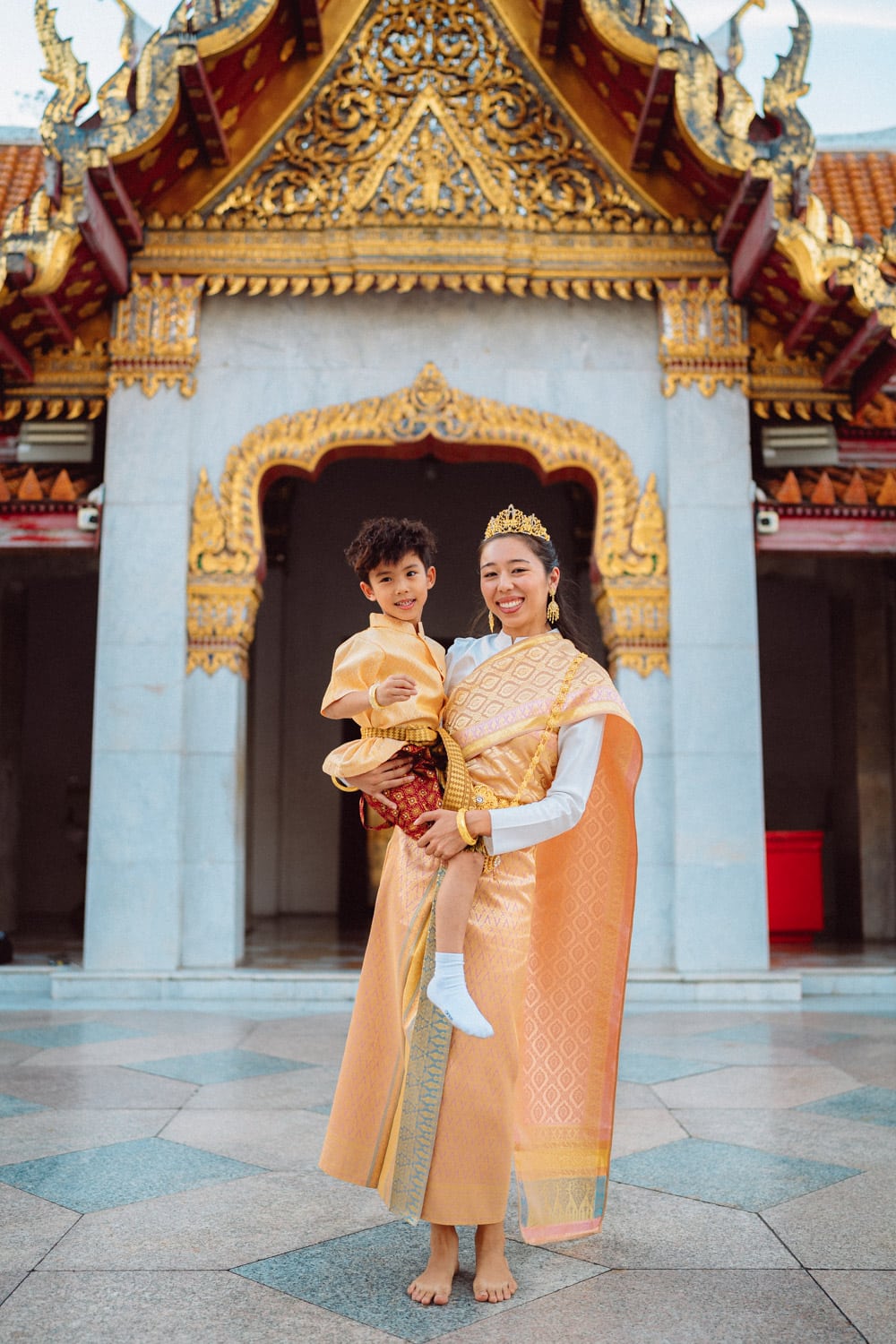The Colorful Tapestry of Thai Celebrations
Thailand’s vibrant cultural heritage comes alive through its numerous festivals that dot the calendar year. These celebrations are not merely events; they are living museums where traditions, beliefs, and artistic expressions converge in spectacular displays. At the heart of these festivities are the magnificent traditional costumes that transform ordinary citizens into walking pieces of art. The chut thai, or traditional Thai costume, varies significantly across different celebrations, each telling its own story through intricate designs, symbolic colors, and meticulous craftsmanship. For visitors wishing to immerse themselves in Thai culture, experiencing these festivals while wearing authentic traditional attire can create memories that last a lifetime. Fortunately, services like thai costume rental at SiamCrown provide both locals and tourists the opportunity to participate fully in these cultural celebrations by offering a wide range of traditional outfits suitable for each occasion. From the water-splashing fun of Songkran to the magical floats of Loy Krathong, each festival showcases Thailand’s rich cultural tapestry through its unique costumes and traditions.
Songkran: Water Festival and Traditional Elegance
Songkran, Thailand’s famous water festival marking the Thai New Year, transforms the streets into joyful water battlegrounds each April. While modern celebrations often feature water guns and casual attire, the traditional heart of Songkran reveals a more elegant side through its distinctive costumes. During formal Songkran ceremonies, Thai people don special versions of the chut thai featuring lightweight fabrics in pastel colors that reflect the season’s freshness. Women wear the graceful sabai (a cloth draped over one shoulder) paired with a sinh (a wrapped skirt) often in light blues, lavenders, and soft yellows symbolizing purification and new beginnings. Men typically dress in light-colored suea phraratchathan (Thai-style jackets) with matching pants. These garments are often adorned with subtle floral patterns representing growth and renewal. The traditional clothing creates a striking contrast to the playful water activities and reminds participants of the festival’s deeper cultural significance. For those wishing to experience Songkran in its full cultural glory, arranging a thai costume rental through siamcrown.com can provide access to these beautiful seasonal variations of traditional Thai dress, allowing everyone to participate in both the water fun and the more formal blessing ceremonies with appropriate attire.
Loy Krathong: Floating Lights and Royal Inspirations
The enchanting festival of Loy Krathong, celebrated on the full moon of the twelfth lunar month (usually November), illuminates Thailand’s waterways with thousands of floating offerings. This magical evening showcases some of the most breathtaking examples of traditional Thai formal wear. During Loy Krathong celebrations, many Thai people wear elaborately styled versions of chut thai inspired by royal court dress from the Ayutthaya and Rattanakosin periods. Women often choose the elegant chut thai chitlada or the more elaborate chut thai boromphiman, featuring jewel-toned silk fabrics with gold thread embroidery. The outfits are typically completed with sabai drapes across the chest and shoulder, complemented by intricate jewelry that gleams in the moonlight as krathongs are released onto the water. Men frequently wear the formal suea phraratchathan with pha muang (lower garment) in coordinating rich colors. The collective effect of these costumes against the backdrop of floating lights creates an atmosphere of timeless beauty. For travelers hoping to participate in this magical festival in authentic style, thai costume rental services from reputable providers like SiamCrown offer carefully crafted traditional outfits that honor the festival’s regal aesthetic while ensuring proper cultural respect is maintained throughout the celebrations.
Phi Ta Khon: The Ghostly Masks and Colorful Attire
The unique and vibrant Phi Ta Khon Festival in northeastern Thailand’s Dan Sai district transforms participants into playful spirits through its distinctive costumes. Unlike other Thai festivals that showcase the refined elegance of traditional court dress, Phi Ta Khon embraces a more folkloric approach to the chut thai concept. The festival’s most distinctive feature is its towering, colorful masks made from coconut husks and palm leaves, painted in bright, sometimes mischievous expressions. These masks are paired with suits made from brilliantly colored strips of cloth sewn together in patchwork fashion, creating a vibrant, swirling effect as participants dance through the streets. The costumes represent spirits and are worn during lively processions meant to honor Buddha and local spirits while celebrating fertility. The handcrafted nature of these costumes represents an important dimension of Thai folk art that contrasts with but complements the more formal styles seen in royal-influenced festivals. Visitors fascinated by this unique expression of Thai costume tradition can learn more about regional variations in traditional dress through cultural resources available at siamcrown.com, where different styles of thai costume rental options showcase the diverse expressions of traditional attire found throughout Thailand’s various regions and cultural celebrations.
Bun Bang Fai: Rocket Festivals and Northeastern Fashion
In Thailand’s northeastern Isaan region, the pre-monsoon season brings the explosive celebration of Bun Bang Fai, or the Rocket Festival. This agricultural festival, aimed at encouraging rainfall for the coming growing season, features a distinctive style of traditional dress that showcases the unique cultural heritage of the Isaan people. During Bun Bang Fai celebrations, women often wear the traditional sinh (skirt) with beautiful handwoven patterns specific to northeastern weaving traditions, featuring bold geometric designs in contrasting colors. These are paired with fitted blouses in complementary colors and often accessorized with handcrafted silver jewelry that has been passed down through generations. Men typically wear phakama (lower cloth) in similar woven patterns with simple shirts, sometimes adding traditional headwear during ceremonial moments. What makes the chut thai variations at Bun Bang Fai particularly special is their practicality combined with bold artistic expression—the costumes need to be comfortable for the lively dancing and parades that accompany the rocket launching while still honoring traditional textile arts. This balance of function and beauty characterizes much of Thailand’s regional costume traditions. Those interested in experiencing the unique textile heritage of different Thai regions can explore various styles through thai costume rental services that specialize in regional variations, allowing visitors to connect with Thailand’s diverse cultural expressions beyond just the central Thai styles most commonly seen in tourist areas.
Royal Ploughing Ceremony: Ancient Traditions and Court Dress
The Royal Ploughing Ceremony, or Phra Ratcha Phithi Charot Phra Nangkal, represents one of Thailand’s most ancient agricultural traditions and showcases some of the most formal and exquisite examples of traditional Thai costume. This royal ceremony, typically held in May, features participants in elaborate court dress that has remained largely unchanged for centuries. The outfits worn during this ceremony reflect the highest level of formality in Thai costume traditions. Officials wear historical court dress including the suea khrui (an elaborate gold-embroidered jacket) paired with pha muang yok (brocaded lower garments) for men, while women in attendance wear full formal chut thai dusit or chut thai chakri featuring intricate gold thread work against rich silk backgrounds. The level of craftsmanship in these ceremonial costumes represents the pinnacle of Thai textile arts, with each piece requiring months of skilled handwork to complete. The preservation of these costume traditions connects modern Thais with ancient ceremonial practices that pre-date even the establishment of the current dynasty. For those interested in the history and evolution of court dress in thailand, educational resources about traditional costume are available through cultural centers, and some examples of ceremonial-inspired chut thai can be viewed or even rented for special occasions through specialized thai costume rental services that focus on historical accuracy and cultural significance in their offerings.
Vegetarian Festival: White Purity and Ceremonial Dress
Phuket’s famous Vegetarian Festival, occurring during the ninth lunar month (usually October), combines Chinese and Thai traditions in a fascinating cultural fusion reflected in its distinctive costume traditions. During this intense spiritual festival, participants wear pure white attire symbolizing cleanliness and merit. While not as ornate as costumes seen in other Thai celebrations, the white clothing worn during the Vegetarian Festival carries deep symbolic meaning. Festival participants who will serve as mediums for Chinese deities wear special all-white versions of traditional Chinese-influenced garments including loose pants and tops secured with fabric ties rather than buttons. These are sometimes embellished with Chinese calligraphy representing blessings or protective phrases. Those performing more extreme ceremonial acts may add red accents to their white attire, with the red symbolizing good fortune and protection. The simplicity of these costumes stands in stark contrast to the elaborate face piercings and intense ceremonial activities that characterize the festival. This demonstrates how Thai costume traditions adapt to different cultural influences while maintaining core symbolic meanings—in this case, the emphasis on purity through white garments. Visitors interested in learning more about the fascinating blend of Thai and Chinese cultural elements in southern Thailand can discover information about regional costume variations through cultural heritage resources, with some specialized thai costume rental providers offering appropriate festival attire for those wishing to participate respectfully in these unique traditions.
The Modern Revival of Traditional Thai Dress
In recent years, Thailand has experienced a remarkable revival of interest in traditional dress, with young people enthusiastically embracing the chut thai as a way to connect with their cultural heritage. This renaissance has been fueled by social media, celebrity endorsements, and government initiatives promoting traditional costume wearing during important occasions. Modern interpretations of traditional Thai costume often blend historical accuracy with contemporary sensibilities, making these beautiful garments more accessible for everyday appreciation. Designers are creating chut thai variations that honor traditional silhouettes and techniques while introducing subtle modern elements like adjustable fastenings or more comfortable fabric blends. This revival has created new opportunities for both Thais and visitors to appreciate the artistry and cultural significance of traditional dress beyond just festival occasions. Many young Thais now choose to wear traditional dress for graduation ceremonies, temple visits, or wedding celebrations, demonstrating the enduring relevance of these beautiful garments in contemporary life. For tourists wishing to participate in this cultural appreciation, services offering thai costume rental provide the perfect opportunity to experience wearing these magnificent garments while visiting historic sites or attending cultural events. Websites like siamcrown.com offer valuable information about costume etiquette and history alongside rental services, ensuring that visitors can engage with Thai costume traditions in a respectful and informed manner that enriches their travel experience.
Preserving Cultural Heritage Through Costume Traditions
The preservation of traditional Thai costume represents more than just maintaining beautiful garments—it embodies the protection of cultural knowledge, artistic techniques, and historical narratives that might otherwise be lost in our rapidly modernizing world. Each chut thai style contains within its folds and patterns stories of the communities that created it, the historical periods that shaped it, and the values that it was designed to express. The detailed craftsmanship involved in creating authentic Thai costumes—from handweaving silk threads to executing intricate gold thread embroidery techniques—represents intangible cultural heritage that requires active preservation efforts. Organizations dedicated to maintaining these traditions work with master craftspeople to document techniques and train new generations in these specialized skills. For visitors to Thailand, engaging with traditional costume through respectful wearing offers a unique way to participate in cultural preservation while gaining deeper appreciation for Thai heritage. When tourists choose authentic thai costume rental options from culturally conscious providers, they support the craftspeople and businesses committed to maintaining these traditions. This cultural exchange creates meaningful connections between visitors and local traditions while generating economic support for the continued practice of traditional arts. By wearing these beautiful garments with understanding and respect, both Thais and international visitors contribute to a living tradition that continues to evolve while honoring its deep historical roots.



